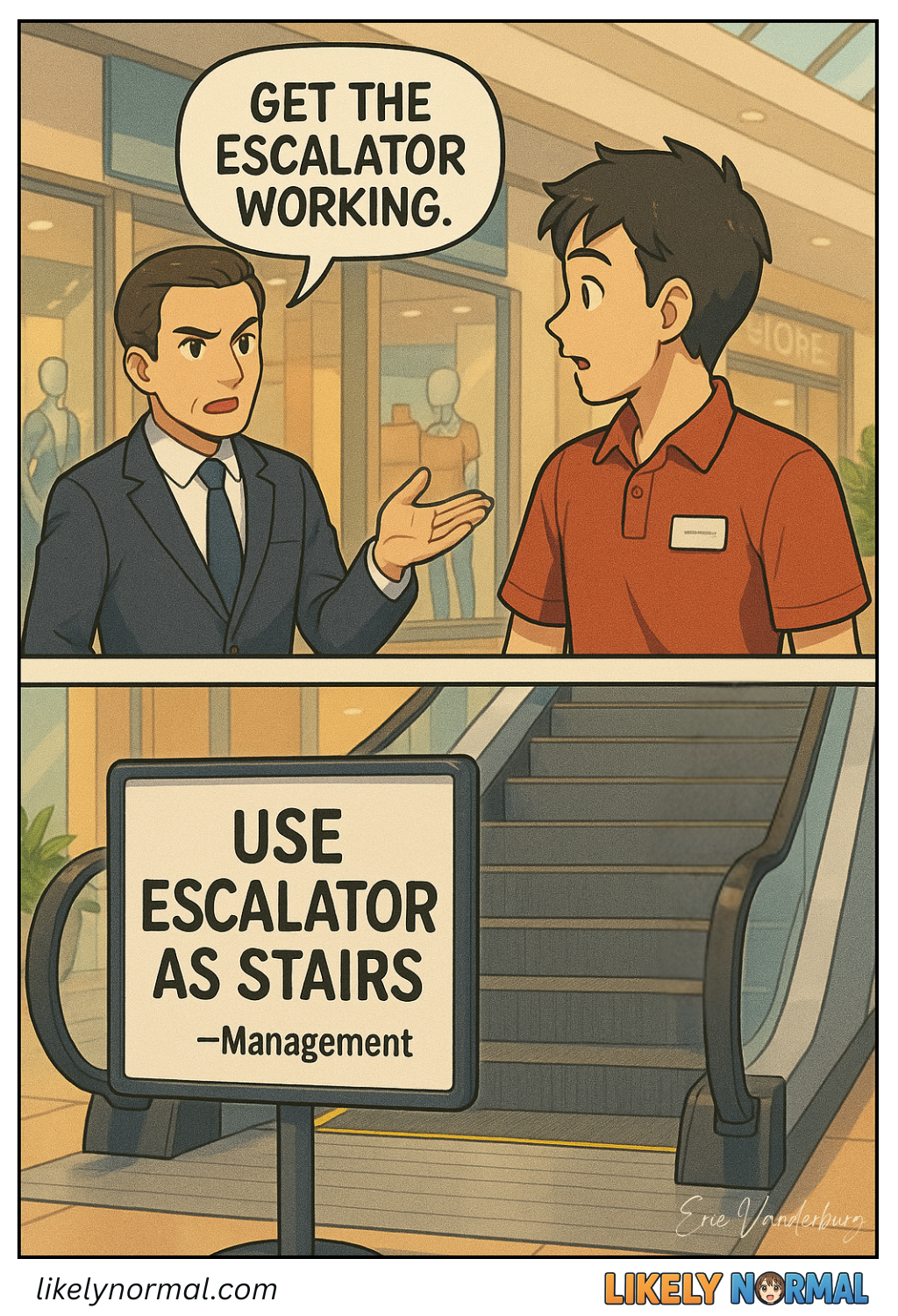Easy Escalator Repair
There’s a special kind of genius in the way people—whether employees, students, or children—interpret instructions not as rigid commands, but as loose suggestions open to artistic reinterpretation. It’s not disobedience; it’s innovation. Why solve a problem the boring, intended way when you can technically check the box while doing the absolute bare minimum—or even better, something entirely different?
Then there’s the “Clean Your Room” directive given to children. To a parent, this means vacuuming, folding clothes, and maybe even opening a window to air out the faint scent of chaos. To a kid? It means shoving everything under the bed, then proudly declaring, “See? You can’t even tell!” Bonus points if they prop a single decorative pillow on top of the mess like it’s some kind of crime scene tarp.
In the workplace, “Send me those reports by EOD” is another classic. To the boss, this means “Compile data, analyze trends, and format professionally.” To the employee? It means attaching a half-finished Excel sheet at 4:59 PM with the subject line “Preliminary Draft (More to Come!)”—knowing full well nothing more will ever come.
And who could forget the “Be More Active” health initiative at the office? When told to take the stairs instead of the elevator, employees didn’t start climbing flights like fitness enthusiasts. No, they simply stood on the escalator and called it “active riding.” HR may have wanted cardio, but the people wanted compliance with a technicality.
Kids, of course, are the undisputed champions of this game. “Brush your teeth for two minutes” becomes a 10-second splash-and-dash with the faucet running loudly for cover. “Eat your vegetables” morphs into “Hide peas in napkin, then ‘accidentally’ drop napkin in trash.” And “Be home by curfew” is interpreted as “Text ‘here now’ from the driveway at 12:01 AM.”
The beauty of creative compliance is that it’s not technically wrong—just spiritually defeated. It’s the art of giving people exactly what they asked for, just not what they meant. So the next time someone follows your instructions in a way that makes you question reality, just remember: They’re not lazy. They’re efficient. And honestly, isn’t that the real life hack?
Final Thought: If a sign says “Wet Paint,” someone will touch it. If a rule says “No Running,” someone will speed-walk aggressively. And if you say “Do your best,” someone will do the version of their best that requires the least effort. It’s not malice—it’s human nature. And it’s hilarious.

Discussion ¬